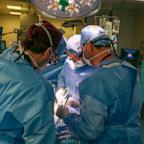Japan explores using cellphones to stop pandemics
TOKYO -- A few months from now, a highly contagious disease will spread through a Japanese elementary school. The epidemic will start with several unwitting children, who will infect others as they attend classes and wander the halls.
If nothing is done, it will quickly gain momentum and rip through the student body, then jump to parents and others in the community. But officials will attempt to stymie the disease and save the school — using mobile phones.
The sickness will be a virtual one, in an experiment funded by the Japanese government. A subsidiary of Softbank, a major Japanese Internet and cellular provider, has proposed a system that uses phones to limit pandemics.
The exact details have yet to be fixed, but Softbank hopes to pick an elementary school with about 1,000 students and give them phones equipped with GPS. The locations of the children will be recorded every minute of the day and stored on a central server.
A few students will be chosen to be considered "infected," and their movements over the previous few days will be compared with those of everyone else. The stored GPS data can then be used to determine which children have crossed paths with the infected students and are at risk of having contracted the disease.
The families of exposed students will be notified by messages to their mobile phones, instructing them to get checked out by doctors. In a real outbreak, that could limit the rate of new infections.
"The number of people infected by such a disease quickly doubles, triples and quadruples as it spreads. If this rate is decreased by even a small amount, it has a big effect in keeping the overall outbreak in check," said Masato Takahashi, who works on infrastructure strategy at Softbank.
He demonstrates with a calculation: If an infected person makes about three more people sick per day, and each newly infected person then makes another three people sick, on the 10th day about 60,000 people would catch the disease. If each sick person instead infected two people a day, on the 10th day about 1,500 people would get sick.




